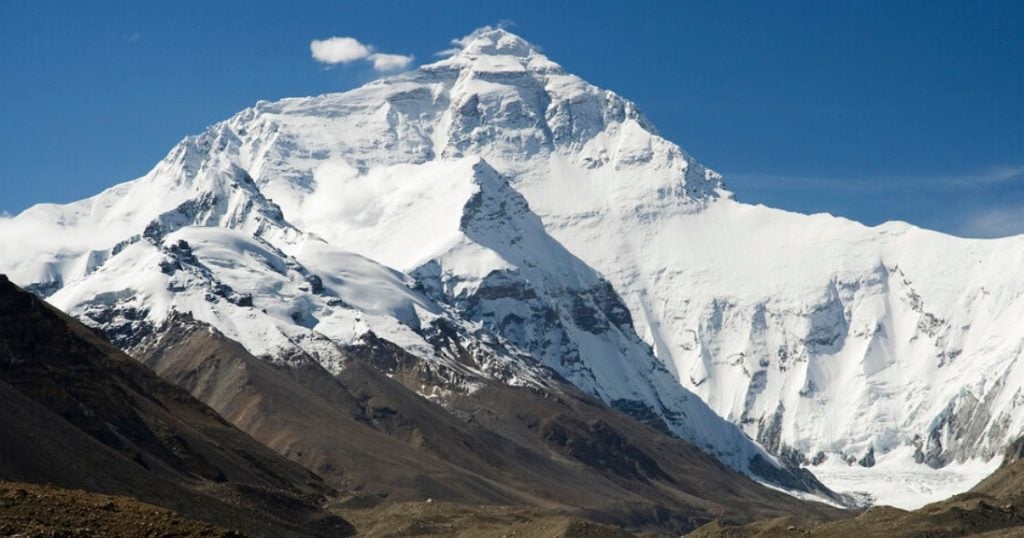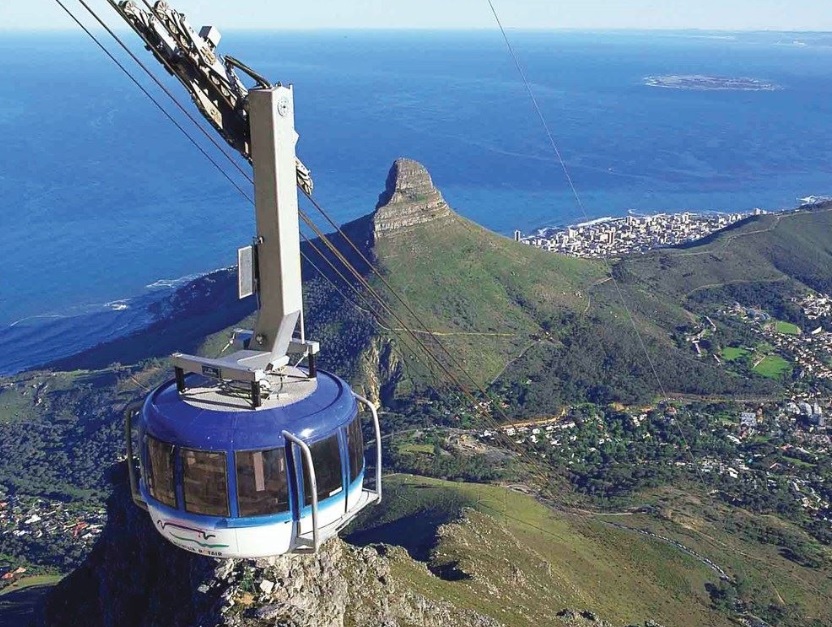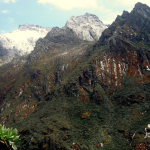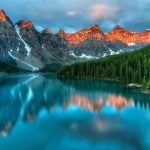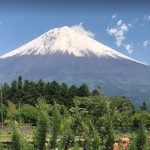Highest Mountain in Africa
Africa, often associated with vast plains and arid deserts, is also home to impressive mountain ranges. These mountains, formed through various geological processes such as volcanic activity, tectonic movement, and erosion, contribute to the continent’s diverse landscapes. African mountains vary greatly in height, climate, and vegetation. Some boast snow-capped peaks while others are surrounded by tropical rainforests. These mountains play a significant role in local cultures and religions, and they are popular destinations for climbers and nature enthusiasts from around the world. Highest Mountain in Africa :
Kilimanjaro Mountain
Kilimanjaro is Africa’s highest mountain and one of the largest single volcanic masses in the world. Located in Tanzania, this massive volcano stands at an elevation of 5,895 meters. Its snow-capped peak provides a striking contrast to the hot African climate. Kilimanjaro consists of three volcanic cones: Kibo, Mawenzi, and Shira. Beyond its geographical significance, the mountain is home to a rich biodiversity, supporting various animal species and plant life. Kilimanjaro holds cultural and religious importance for the local people. As one of the Seven Summits, it is a popular destination for climbers worldwide.
Note : Tanzania’s Minister of Information and Communication Technology, Nape Nnauye, shared the news that they have connected the 5,895-meter peak of Mount Kilimanjaro to the internet, linking it to the world.
Mount Kenya: The Majestic Jewel of East Africa
Mount Kenya is the second-highest mountain in Africa and an iconic landmark of Kenya. Standing at 5,199 meters, it consists of three main peaks: Batian, Nelion, and Lenana. Beyond its geographical significance, Mount Kenya is a biodiversity hotspot, home to a variety of plant and animal species. Surrounding forests, glaciers, and diverse vegetation contribute to its unique ecosystem. With cultural and religious significance for the local people, the mountain is also a popular climbing destination for mountaineers from around the world. Reaching the summit of Mount Kenya is a challenging endeavor, both physically and mentally.
Mount Stanley Margherita Peak
Mount Stanley, the highest peak in the Rwenzori Mountains, stands at 5,109 meters and straddles the border between Uganda and the Democratic Republic of the Congo. It is the third-highest mountain in Africa and is famous for its highest point, Margherita Peak, which is often shrouded in mist and clouds. The Rwenzori range, also known as the “Mountains of the Moon,” is characterized by its rugged terrain, deep valleys, and unique ecosystems, featuring a variety of endemic plants and animals. Despite its equatorial location, Mount Stanley is capped with glaciers, though these have been receding due to climate change. Climbing Mount Stanley is a challenging endeavor, with its steep slopes and unpredictable weather conditions, making it a sought-after destination for experienced mountaineers.
Mount Simien : Where Nature and Adventure Converge
The Simien Mountains, located in northern Ethiopia, are an impressive mountain range with the highest peak, Ras Dashen, reaching 4,550 meters. These mountains offer breathtaking landscapes characterized by sharp cliffs, deep valleys, and vast plateaus. The Simien Mountains National Park is a UNESCO World Heritage Site and is rich in biodiversity, home to many endemic species. Rare animals such as the Gelada baboon, Ethiopian wolf, and Walia ibex inhabit these mountains. With its natural beauty and challenging hiking trails, the Simien Mountains are a unique destination for both nature lovers and adventurous trekkers.
Mount Meru: A Hidden Gem in Africa
Mount Meru, located in northern Tanzania, is a dormant stratovolcano that rises to 4,562 meters, making it the second-highest mountain in the country after Kilimanjaro. Situated within Arusha National Park, Meru offers a rich and diverse landscape, ranging from dense rainforests at its base to alpine deserts near its summit. The mountain is home to a variety of wildlife, including elephants, buffaloes, and colobus monkeys, which can often be seen during the climb. The trek up Mount Meru is known for its challenging routes and stunning views, including a breathtaking panorama of Mount Kilimanjaro from the summit.
Mount Karisimbi
Mount Karisimbi, standing at 4,507 meters, is the highest peak in the Virunga Volcanic Mountain range, located on the border between Rwanda and the Democratic Republic of the Congo. This stratovolcano, though situated in an active volcanic region, is currently dormant. The slopes of Karisimbi are home to diverse ecosystems, ranging from dense tropical forests to alpine vegetation, and support rich biodiversity, including the endangered mountain gorillas.
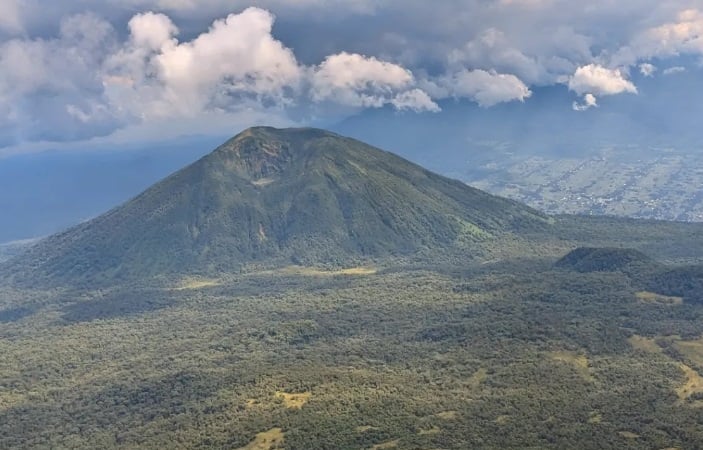
Mount Toubkal
Mount Toubkal, located in Morocco’s Atlas Mountains, is the highest peak in North Africa, standing at 4,167 meters. Situated south of Marrakech, it has become a popular destination for both locals and mountaineers. Toubkal is known for its dramatic landscapes, diverse vegetation, and high mountain climate. The ascent to its summit is relatively accessible, making it an appealing adventure for climbers of various skill levels. As a result, Mount Toubkal stands out as a destination of natural beauty and cultural significance.
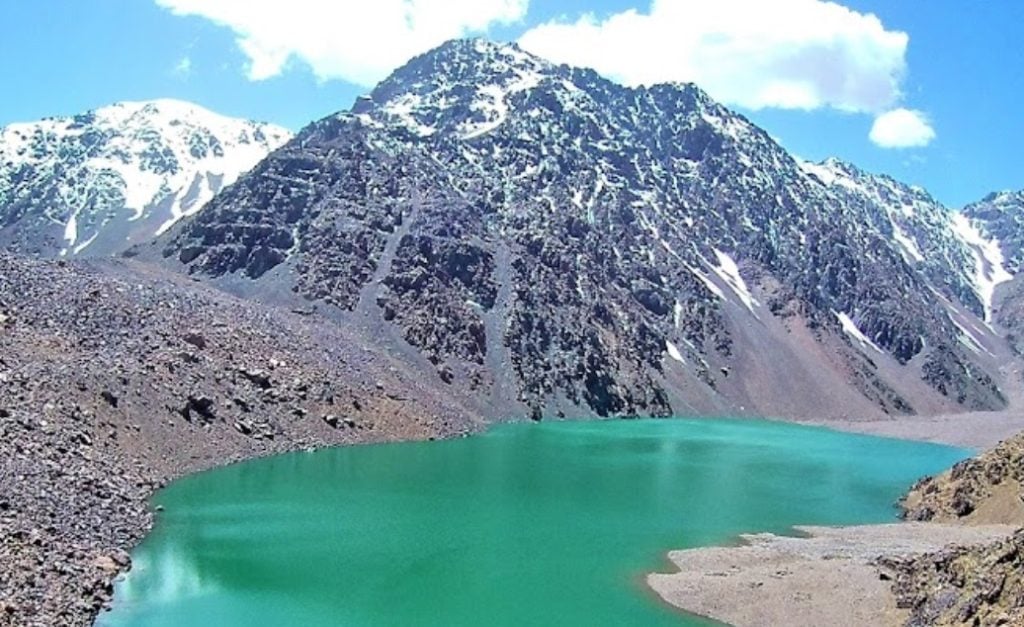
Mount Elgon
Mount Elgon is a prominent stratovolcano located on the border between Uganda and Kenya, standing tall at approximately 4,321 meters (14,177 feet) above sea level. It is one of Africa’s most impressive mountains, not only because of its height but also due to its rich biodiversity, cultural significance, and unique geological features. As one of the oldest volcanoes in East Africa, Mount Elgon is a key natural landmark with profound ecological and cultural importance.
Mount Elgon is among the oldest volcanic mountains in Africa, with its formation dating back around 24 million years. This ancient volcano is characterized by a massive caldera, approximately 8 kilometers in diameter, making it one of the largest volcanic craters in the world. The caldera was formed as a result of the volcano’s summit collapsing after the depletion of its magma chamber during an eruption. The mountain’s main peaks include Wagagai (4,321 meters), Sudek (4,302 meters), Koitobos (4,222 meters), and Mubiyi (4,211 meters). The landscape of Mount Elgon is marked by its expansive plateaus, deeply eroded gorges, and steep cliffs, which reveal layers of volcanic rock and ash, offering insights into the mountain’s volcanic history.
Mount Elgon is protected by national parks on both the Ugandan and Kenyan sides, known respectively as Mount Elgon National Park (Uganda) and Mount Elgon National Park (Kenya). These parks are critical for conserving the mountain’s unique ecosystems and ensuring the protection of its diverse flora and fauna. They also play a crucial role in promoting sustainable tourism, which benefits local communities through job creation and infrastructure development.
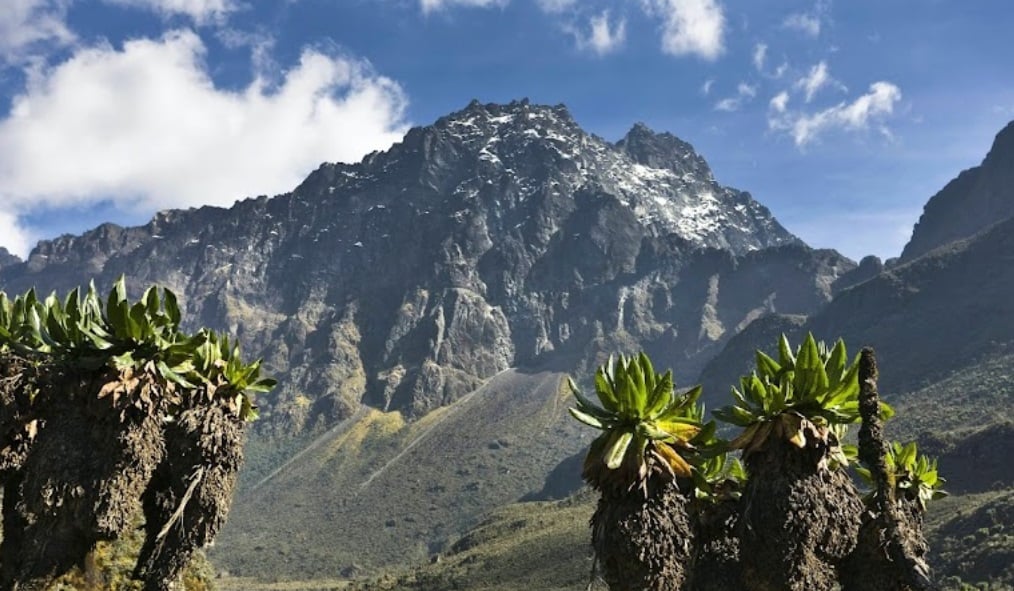
What is the highest mountain in Africa?
The highest mountain in Africa is Mount Kilimanjaro, located in Tanzania. Standing at 5,895 meters (19,341 feet), it is home to Africa’s highest point, Uhuru Peak. Kilimanjaro is also one of the tallest free-standing volcanic mountains in the world and is a popular destination for both nature lovers and mountaineers.
What are some other important features of Mount Kilimanjaro?
Mount Kilimanjaro is situated in northeastern Tanzania and consists of three main volcanic cones: Kibo, Mawenzi, and Shira. Uhuru Peak is the highest point on the Kibo cone. The mountain is famous for its snow-capped summit, which is rapidly shrinking due to global warming. Kilimanjaro’s diverse ecosystems range from tropical rainforests at its base to alpine meadows and glaciers near the summit, supporting a wide variety of flora and fauna.
What is the second highest mountain in Africa?
The second highest mountain in Africa is Mount Kenya. Its highest peak, Batian, reaches 5,199 meters (17,057 feet). Mount Kenya is an ancient stratovolcano, known for its rugged beauty and rich biodiversity. The mountain has three main peaks: Batian, Nelion, and Lenana. While Batian and Nelion require technical climbing skills, Point Lenana is more accessible.
Why is Mount Kenya significant?
Mount Kenya is not only significant for its height but also for its cultural and ecological importance. The Kikuyu people consider the mountain sacred and it holds a central place in their mythology. The mountain is also a UNESCO World Heritage Site and a critical water source for Kenya. The region around Mount Kenya is rich in endemic plant and animal species, making it an important area for conservation.
What are some other high mountains in Africa?
Other notable high mountains in Africa include:
- Rwenzori Mountains (5,109 meters/16,762 feet): Located on the border between Uganda and the Democratic Republic of Congo, the Rwenzori Mountains are famous for Margherita Peak and their permanent snow and glaciers.
- Simien Mountains (4,550 meters/14,928 feet): Located in Ethiopia, the highest peak is Ras Dashen. The Simien Mountains are also a UNESCO World Heritage Site.
- Mount Meru (4,562 meters/14,968 feet): Located in Tanzania, near Kilimanjaro, Mount Meru is an important stratovolcano.
- Mount Karisimbi (4,507 meters/14,787 feet): Situated on the border of Rwanda and the Democratic Republic of Congo, Karisimbi is part of the Virunga Mountains.
Are Africa’s highest mountains suitable for climbing?
Yes, Africa’s highest mountains are popular destinations for hiking and mountaineering. Mount Kilimanjaro offers relatively straightforward trekking routes, making it accessible even to those with limited climbing experience. Mount Kenya presents a more technical challenge, particularly on its highest peaks, which are best suited for experienced climbers. The Rwenzori Mountains are known for their difficult and lengthy climbs, but the breathtaking scenery makes the effort worthwhile.
What is the natural environment like around these mountains?
Answer: Africa’s high mountains boast a rich diversity of ecosystems. Mountains like Kilimanjaro and Kenya feature habitats ranging from tropical forests to alpine meadows. These areas are home to a wide array of wildlife, including elephants, leopards, monkeys, and numerous bird species. Additionally, these mountains support many endemic plant species, making them ecologically significant and valuable for conservation efforts.
Here are some mountains in Africa with cable cars:
- Kilimanjaro’s Disappearing Glaciers: Mount Kilimanjaro in Tanzania, the highest peak in Africa at 5,895 meters (19,341 feet), is famous for its snow-capped summit. However, its glaciers have been rapidly shrinking, with predictions that they could disappear entirely within the next few decades due to climate change.
- Table Mountain’s Unique Biodiversity: Table Mountain in South Africa is one of the most biologically diverse mountains in the world. It is home to over 1,470 species of plants, many of which are endemic, meaning they are found nowhere else on Earth.
- Mount Kenya’s Sacred Status: Mount Kenya, the second-highest mountain in Africa at 5,199 meters (17,057 feet), is considered sacred by the Kikuyu people, who believe the mountain is the dwelling place of their god, Ngai.
- Rwenzori Mountains’ Permanent Snow Caps: The Rwenzori Mountains, also known as the “Mountains of the Moon,” straddle the border between Uganda and the Democratic Republic of the Congo. Despite being located near the equator, these mountains have permanent snow caps and glaciers due to their high altitude.
- Simien Mountains’ Geological Wonders: The Simien Mountains in Ethiopia, a UNESCO World Heritage Site, feature jagged peaks, deep valleys, and one of the most dramatic landscapes in Africa. The mountains are also home to the Ethiopian wolf, one of the world’s rarest canids.
- Mount Elgon’s Largest Volcanic Base: Mount Elgon, straddling the border between Uganda and Kenya, has the largest volcanic base in the world. The base of the extinct shield volcano measures about 80 kilometers (50 miles) in diameter.
- Atlas Mountains’ Role in Ancient Trade: The Atlas Mountains, stretching across Morocco, Algeria, and Tunisia, played a crucial role in ancient trade routes. The Berbers used these mountains to transport goods across North Africa, connecting the Mediterranean with the Sahara Desert.
- Drakensberg Mountains’ Ancient Rock Art: South Africa’s Drakensberg Mountains are home to one of the largest collections of San rock art, with thousands of paintings that date back over 3,000 years, depicting the life and spiritual beliefs of the San people.
- Nyiragongo’s Active Lava Lake: Mount Nyiragongo in the Democratic Republic of the Congo has one of the few permanent lava lakes in the world. The volcano is one of the most active on the planet, with eruptions in 1977 and 2002 causing significant devastation.
- Toubkal’s Trekking Paradise: Mount Toubkal in Morocco is the highest peak in the Atlas Mountains and North Africa, standing at 4,167 meters (13,671 feet). It is a popular trekking destination, offering stunning views and a challenging climb for adventurers.

